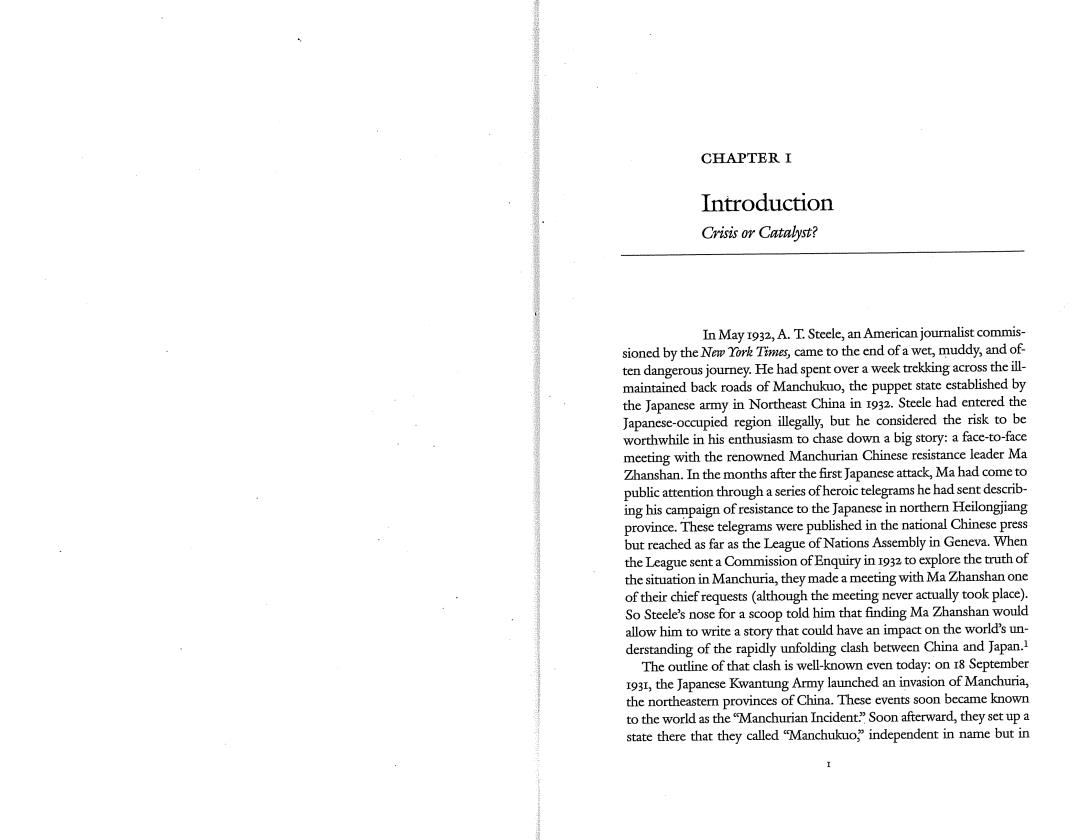正在加载图片...

CHAPTER I Introduction Crisis or Catalyst? In May 1932,A.T.Stecle,an American journalist commis- sioned by the New York Times,came to the end of a wet,muddy,and of- ten dangerous journey.He had spent over a week trekking across the ill- maintained back roads of Manchukuo,the puppet state established by the Japanese army in Northeast China in 1932.Steele had entered the Japanese-occupied region illegally,but he considered the risk to be worthwhile in his enthusiasm to chase down a big story:a face-to-face meeting with the renowned Manchurian Chinese resistance leader Ma Zhanshan.In the months after the first Japancse attack,Ma had come to public attention through a series of heroic telegrams he had sent describ- ing his campaign of resistance to the Japanese in northern Heilongjiang province.These telegrams were published in the national Chinese press but reached as far as the League of Nations Assembly in Geneva.When the League sent a Commission of Enquiry in 1932 to explore the truth of the situation in Manchuria,they made a mecting with Ma Zhanshan one of their chief requests(although the meeting never actually took place). So Steele's nose for a scoop told him that finding Ma Zhanshan would allow him to write a story that could have an impact on the world's un- derstanding of the rapidly unfolding clash between China and Japan. The outline of that clash is well-known even today:on 18 September 1931,the Japanese Kwantung Army launched an invasion of Manchuria, the northeastern provinces of China.These events soon became known to the world as the "Manchurian Incident."Soon afterward,they set up a state there that they called "Manchukuo,independent in name but in